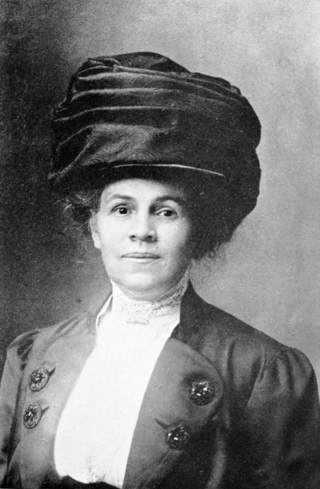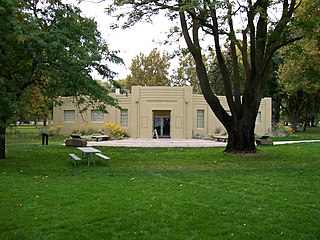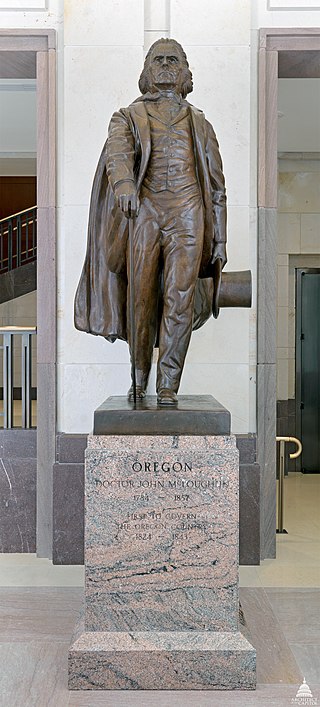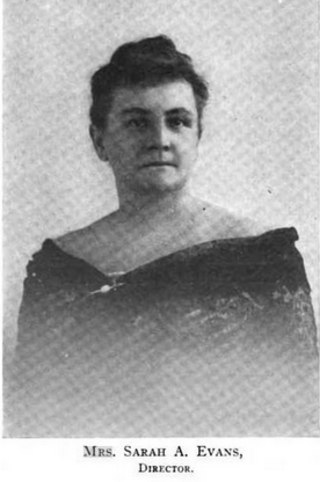
Toussaint Charbonneau was a French Canadian explorer, fur trapper and merchant who is best known for his role in the Lewis and Clark Expedition as the husband of Sacagawea.

The National Statuary Hall is a chamber in the United States Capitol devoted to sculptures of prominent Americans. The hall, also known as the Old Hall of the House, is a large, two-story, semicircular room with a second story gallery along the curved perimeter. It is located immediately south of the Rotunda. The meeting place of the U.S. House of Representatives for nearly 50 years (1807–1857), after a few years of disuse it was repurposed as a statuary hall in 1864; this is when the National Statuary Hall Collection was established. By 1933, the collection had outgrown this single room, and a number of statues are placed elsewhere within the Capitol.

Jean Baptiste Charbonneau, sometimes known in childhood as Pompey or Little Pomp, was an American explorer, guide, fur trapper, trader, military scout during the Mexican–American War, alcalde (mayor) of Mission San Luis Rey de Francia and a gold digger and hotel operator in Northern California. His mother was Sacagawea, a Lemhi Shoshone who worked as a guide and interpreter for the Lewis and Clark Expedition.
Cameahwait was the brother of Sacagawea, and a Shoshone chief. He was the head of the first group of inhabitants of modern-day Idaho who were encountered by Europeans.

Franklin Bachelder Simmons was a prominent American sculptor of the nineteenth century. Three of his statues are in the National Statuary Hall Collection, three of his busts are in the United States Senate Vice Presidential Bust Collection, and his statue of Ulysses S. Grant is in the United States Capitol Rotunda.

Sacagawea was a Lemhi Shoshone woman who, in her teens, helped the Lewis and Clark Expedition in achieving their chartered mission objectives by exploring the Louisiana Territory. Sacagawea traveled with the expedition thousands of miles from North Dakota to the Pacific Ocean, helping to establish cultural contacts with Native American people and contributing to the expedition's knowledge of natural history in different regions.

Eva Emery Dye was an American writer, historian, and prominent member of the women's suffrage movement. As the author of several historical novels, fictional yet thoroughly researched, she is credited with "romanticizing the historic West, turning it into a poetic epic of expanding civilization." Her best known work, The Conquest: The True Story of Lewis & Clark (1902), is notable for being the first to present Sacagawea as a historically significant character in her own right.

Sacajawea State Park is a public recreation area and historical preserve in the city of Pasco, Washington, covering 267 acres (108 ha) at the confluence of the Snake and Columbia rivers where the Lewis and Clark Expedition camped on October 16, 1805. The state park bears the name of the Shoshone woman Sacagawea, who was an active member of the expedition married to expedition member Toussaint Charbonneau, a French-Canadian interpreter and explorer. The park's Sacajawea Interpretive Center features exhibits about her and about the Lewis and Clark Expedition.
Leonard Crunelle was a French-born American sculptor especially known for his sculptures of children. Crunelle immigrated with his family to the United States and worked as a coal miner in Decatur, Illinois. Lorado Taft discovered him as a youth and brought him to Chicago where he was an apprentice to the sculptors decorating the 1893 World's Fair Horticultural Exhibit. He studied at the Art Institute of Chicago with Taft.

American Revolution Statuary is a group of fourteen statues in Washington, D.C., that honor men whose actions assisted the Thirteen Colonies in their fight against the Kingdom of Great Britain in the American Revolutionary War. They are spread throughout the city, except for the four statues in Lafayette Square, across from the White House, that honor some of the foreign heroes from the war. Some of the statues are located in prominent places, while others are in small parks or stand alone in front of buildings. All of the statues are owned and maintained by the National Park Service, an agency of the United States Department of the Interior. The statuary was collectively listed on the National Register of Historic Places (NRHP) in 1978 and the District of Columbia Inventory of Historic Sites the following year. In addition, most are also contributing properties to historic districts listed on the NRHP.

The Lewis and Clark Exposition Gold dollar is a commemorative coin that was struck in 1904 and 1905 as part of the United States government's participation in the Lewis and Clark Centennial Exposition, held in the latter year in Portland, Oregon. Designed by United States Bureau of the Mint Chief Engraver Charles E. Barber, the coin did not sell well and less than a tenth of the authorized mintage of 250,000 was issued.

Sacajawea and Jean-Baptiste is a bronze sculpture of Sacagawea and Jean Baptiste Charbonneau by American artist Alice Cooper, located in Washington Park in Portland, Oregon, in the United States.

The Lewis and Clark Memorial Column is an outdoor monument by artist Otto Schumann, dedicated to Meriwether Lewis and William Clark for their expedition and located at Washington Park in Portland, Oregon.

Lewis and Clark, also known as the Lewis and Clark Expedition of 1804–1806 Memorial, is an outdoor 1934 white marble sculpture by Leo Friedlander installed outside the Oregon State Capitol in Salem, Oregon, United States.

John McLoughlin, also known as Dr. John McLoughlin, is a bronze sculpture of John McLoughlin by Alexander Phimister Proctor and completed by his son Gifford MacGregor Proctor. One statue is installed at the Oregon State Capitol grounds in Salem, Oregon; another is installed in Washington, D.C., as part of the National Statuary Hall Collection.
Otter Woman was a Shoshone woman who was the wife of Smoked Lodge. Otter Woman was likely kidnapped by the Hidatsa and purchased by Toussaint Charbonneau, who is best known as the husband of Sacagawea. At the time of Sacagawea's abduction and sale to Charbonneau, Otter Woman was already living with Charbonneau as his wife. Charbonneau and Sacagawea were to gain fame as part of the Lewis and Clark Expedition, supported by the Corps of Discovery.

Sarah Ann Shannon Evans was an American clubwoman and suffragist based in Portland, Oregon, president of the Oregon Federation of Women's Clubs from 1905 to 1915. She was the first woman in Portland to carry a police badge, in her work as the city's first Market Inspector. She also worked for state funding of free public libraries in Oregon.

Bruno Louis Zimm was an American sculptor. He created a variety of works: fountains, memorials, freestanding sculptures, and architectural sculptures.
Statue of Sacagawea may refer to:

















